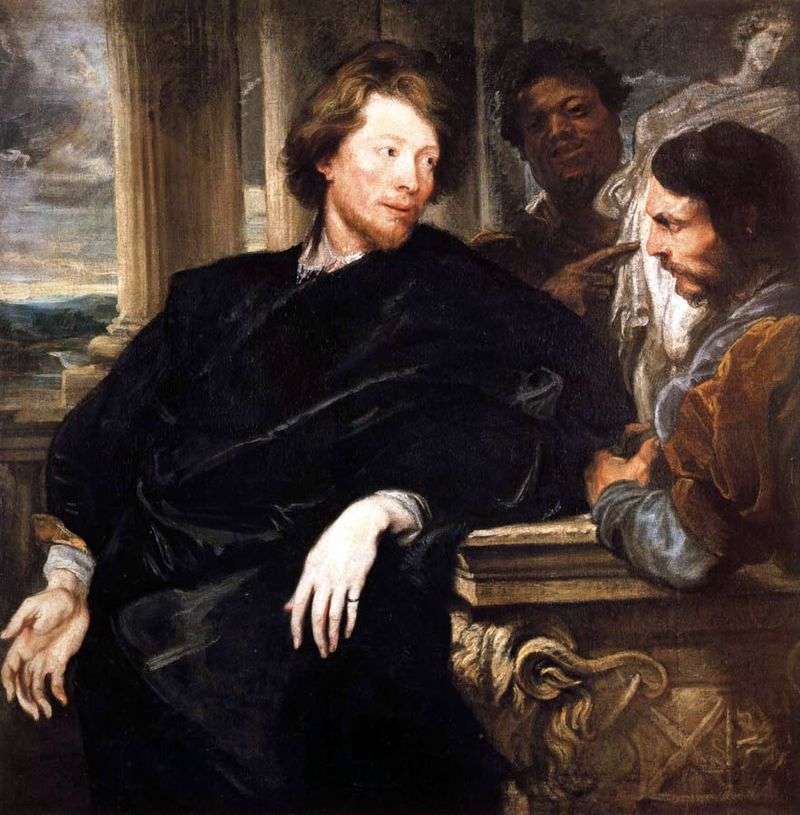
Following the example of Rubens Van Dyke traveled a lot around Italy, studying her artistic heritage. With great attention he treated the masterpieces of Venetian painting, in Rome he was interested in the works of Michelangelo and later masters, such as Annibale Caracci and Guercino, he visited Florence, Bologna, Palermo. Returning to Genoa, Van Dyke continues to paint portraits of local aristocrats. Portraits of his work can be distinguished from the works of Rubens on the tense inner life that shines in the eyes of the younger artist’s models.
In the best portraits of Van Dyck, the artist’s attention is always focused on the faces with their delicate features, slightly frowning brows and a cold, even stern gaze. In the first half of the 17th century, no one except Van Dyke could create an image of a refined intelligent man, calm, educated and self-confident. A fine example of such a portrait in which the master showed both the mind and the will of the diplomat, combined with the delicate taste of the patron and collector of collections for the English King Charles I, can serve as a canvas by George Gage with two assistants, written in Genoa in 1622-1623.
On the canvas is a figure wrapped in a black cloak. The thin and intelligent face of the young man is turned towards the antique statue, which two of his assistants show him and which he apparently intends to acquire. The background is a landscape blurred in the haze behind the Roman columns. The faces of the assistants are written schematically, the focus is on the face of Gage himself and his beautiful nervous hands with thin fingers.
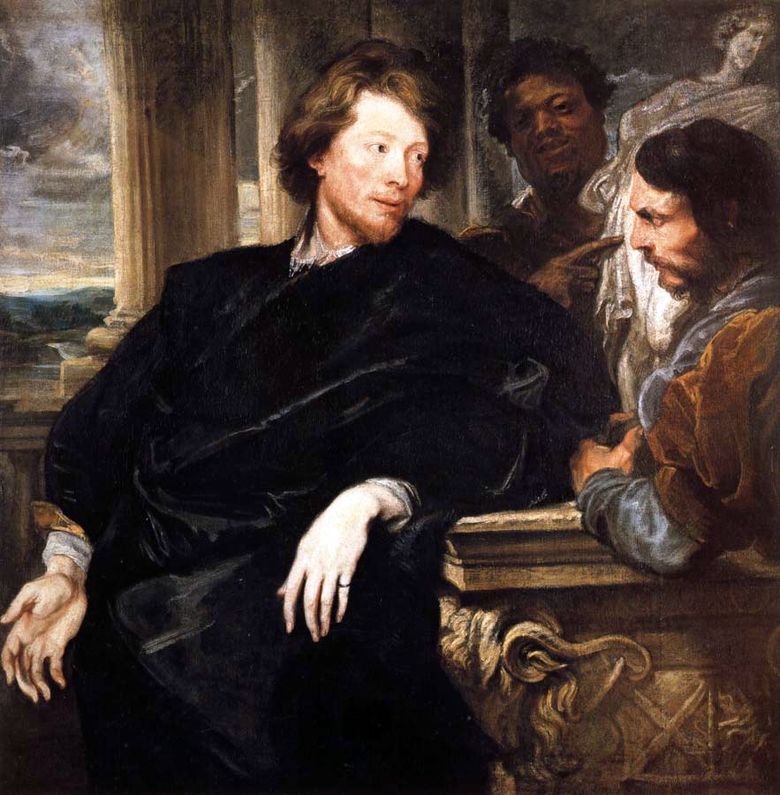 George Gage avec deux assistants – Anthony Van Dyck
George Gage avec deux assistants – Anthony Van Dyck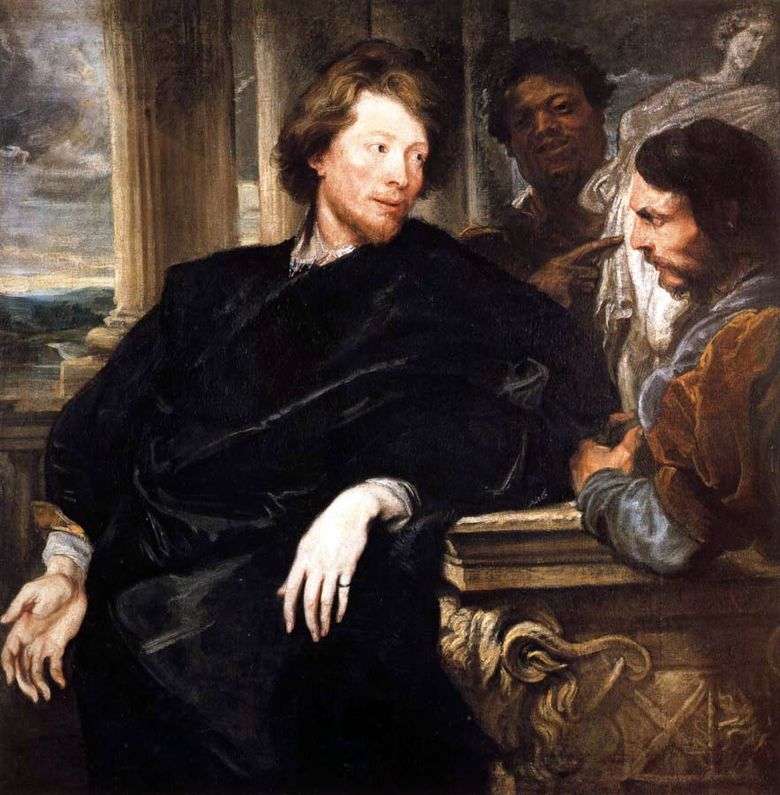 George Gage con dos ayudantes – Anthony Van Dyke
George Gage con dos ayudantes – Anthony Van Dyke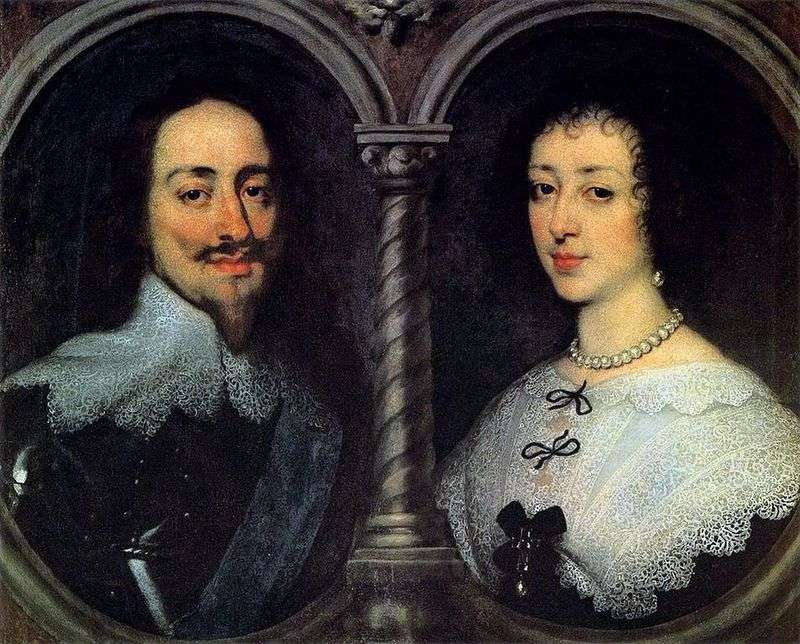 Portrait of Charles I and Henrietta Maria by Anthony Van Dyck
Portrait of Charles I and Henrietta Maria by Anthony Van Dyck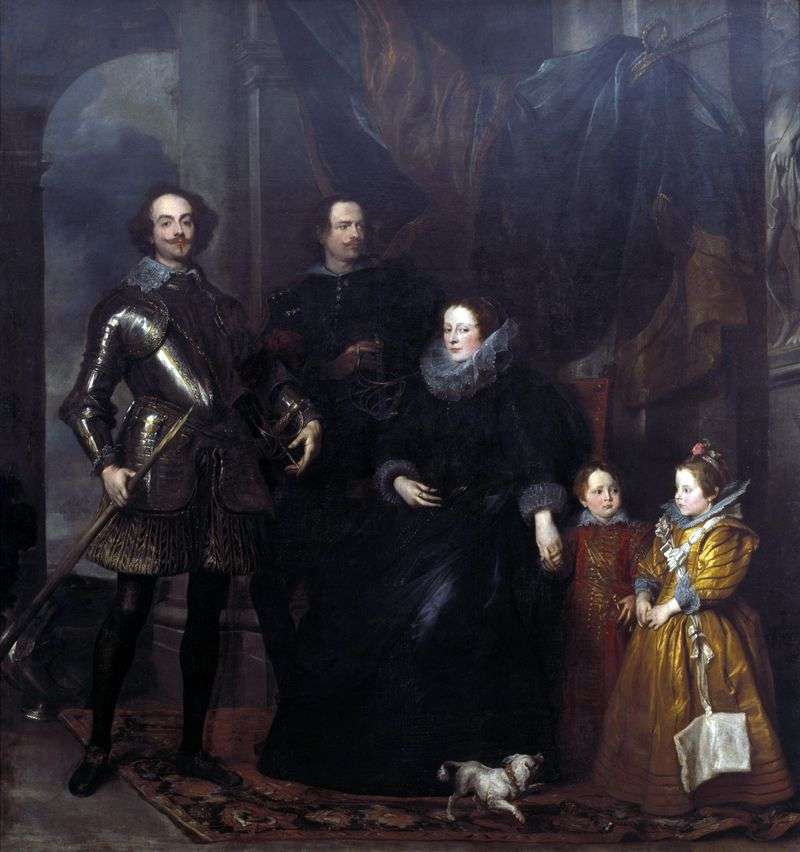 Portrait of the Lomellini family by Anthony Van Dyck
Portrait of the Lomellini family by Anthony Van Dyck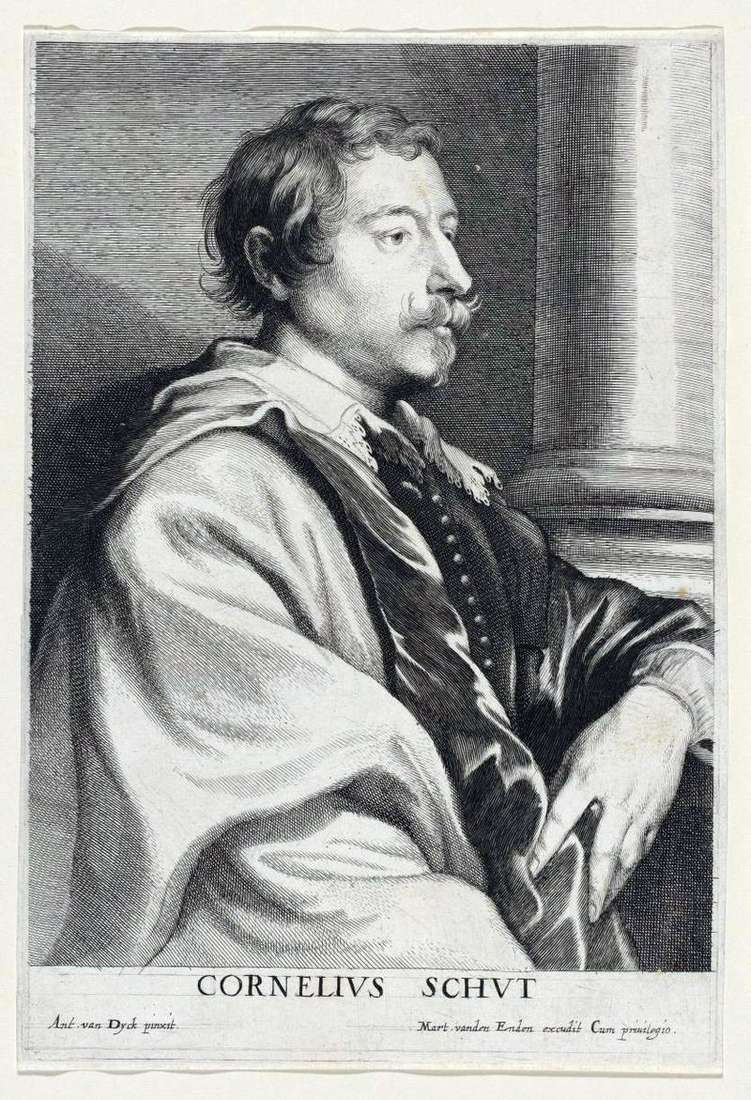 Portrait of Cornelis Shata by Anthony Van Dyck
Portrait of Cornelis Shata by Anthony Van Dyck Charles I, King of England, on the hunt by Anthony Van Dyck
Charles I, King of England, on the hunt by Anthony Van Dyck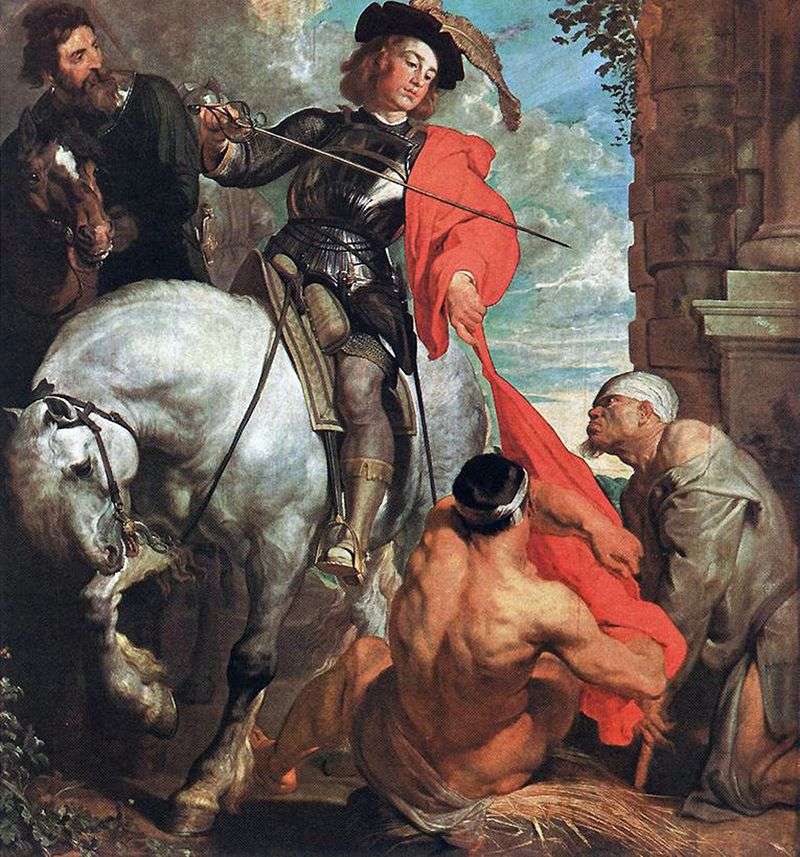 St. Martin and the Paupers by Anthony Van Dyck
St. Martin and the Paupers by Anthony Van Dyck Triumph of Silenus by Anthony Van Dyck
Triumph of Silenus by Anthony Van Dyck